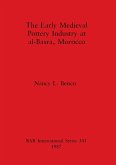Medieval cetacean (whales, dolphins, and porpoises) exploitation has frequently been connected to various medieval societies, including the Basques, Norse, Normans, and Flemish. Primarily for the ninth to the twelfth centuries AD, it has been argued that the symbolic significance of cetaceans surpassed their utilitarian value and that their consumption was restricted to the social elite. The extent to which active whaling was practised remains unclear. The identification of zooarchaeological cetacean fragments to the species level is hard and as a result they are frequently merely identified as 'whale', resulting in a poor understanding of human-cetacean interaction in the past. Zooarchaeological research as part of this study has revealed that medieval cetacean exploitation was widespread and especially the harbour porpoise (Phocoena phocoena), common bottlenose dolphin (Tursiops truncatus), and the North Atlantic right whale (Eubalaena glacialis) were frequently targeted. The exploitation additionally seems to have often been restricted to the social elite.








